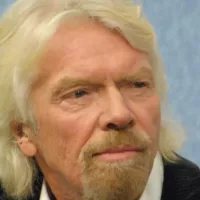Guangzhou, also known as Canton, is the capital and largest city of Guangdong province in southern China. Situated on the Pearl River, it's about 120 km northwest of Hong Kong and 145 km north of Macau. With a history spanning over 2,200 years, Guangzhou served as a significant terminus of the Silk Road.
1911: 1911 Revolution
In 1911, Guangzhou was the site of revolutionary attempts that were the predecessors of the successful 1911 Revolution, which overthrew the Qing dynasty.
1912: Weather Station Established
In 1912, a weather station was established in Guangzhou's Huangpu District, which began recording temperatures.
1917: Constitutional Protection Movement
In 1917, Prime Minister Duan Qirui's abrogation of the constitution triggered the Constitutional Protection Movement. Sun Yat-sen came to head the Guangzhou Military Government supported by the members of the dissolved parliament and the Southwestern warlords.
November 1918: Sun Yat-sen Flees to Shanghai
In November 1918, Sun Yat-sen fled to Shanghai after the Guangzhou government fell apart and warlords withdrew their support.
June 1919: Demolition of City Wall Begins
In June 1919, work began on demolishing the city wall of Guangzhou to make way for wider streets and the development of tramways.
October 1920: Sun Yat-sen Restored by Chen Jiongming
In October 1920, Sun Yat-sen was restored to power in Guangzhou by the Guangdong warlord Chen Jiongming during the Yuegui Wars.
June 16, 1922: Sun Yat-sen Ousted in Coup
On June 16, 1922, Sun Yat-sen was ousted in a coup in Guangzhou and fled on the warship Yongfeng after Chen Jiongming sided with the Zhili clique's Beijing government.
1924: KMT Allies with Communist Party and USSR
In 1924, the KMT allied with the Communist Party and the USSR. The KMT–CCP cooperation was confirmed in the 1st National Congress of the KMT, and the communists were instructed to join the KMT.
1925: Death of Sun Yat-sen
After the death of Sun Yat-sen in 1925, the mood was changing in the party toward the communists.
March 20, 1926: Canton Coup
On March 20, 1926, Chiang Kai-shek solidified his control over the Nationalists and their army during the Canton Coup against Wang Jingwei, the party's left wing, its Communist allies, and its Soviet advisors.
1927: Tone of KMT Rule
By 1927, the Canton years saw the evolution of the KMT into a revolutionary movement with a strong military focus and ideological commitment, setting the tone of the KMT rule of China beyond 1927.
1927: Guangzhou Uprising
In 1927, the communists launched the Guangzhou Uprising after Zhang Fakui seized Canton and installed Wang Jingwei's faction in the city.
1929: Chen Jitang Established
By 1929, Chen Jitang had established himself as the powerholder of Guangdong.
1931: Separate Nationalist Government
In 1931, Chen Jitang threw his weight behind the anti-Chiang schism by hosting a separate Nationalist government in Guangzhou.
December 1934: Unofficial Record Low Temperature
On December 8, 1934, an unofficial record low temperature of −0.3 °C (31.5 °F) was recorded for the station that begun records in 1912 located in Huangpu District.
1936: Chen Jitang Defeated by Chiang
In 1936, Chen Jitang was defeated by Chiang.
1936: Guangzhou-Hankou Railway Completion
In 1936, the line to Wuchang on the Guangzhou–Hankou railway was completed.
December 1938: Japanese Occupation
By the end of December 1938, the Canton Operation subjected the city to Japanese occupation during World War II.
October 14, 1949: Guangzhou Captured
On October 14, 1949, Guangzhou was captured by Communist forces. Defeated Nationalist forces blew up the Haizhu Bridge across the Pearl River in retreat.
1951: Extreme Temperatures Since 1951
Since 1951, extreme temperatures in Guangzhou have been recorded.
February 1957: Extreme Temperature Recorded
In February 1957, Guangzhou recorded an extreme low temperature of 0 °C (32 °F).
1957: Inauguration of the Canton Fair
In the spring of 1957, the Canton Fair, formally the "China Import and Export Fair", was inaugurated in Guangzhou. It is held every year in April and October by the Ministry of Trade.
1990: Residential Districts Concentrated in Western Guangzhou
In 1990, developed residential districts in Guangzhou were almost exclusively concentrated in a small part of western Guangzhou.
1997: Asian Financial Crisis Leads to Migration
In 1997, the Asian financial crisis led to nationals of sub-Saharan Africa migrating in unprecedented numbers to Guangzhou after initially settling in the Middle East and Southeast Asia. This event marked a shift in the demographic landscape of the city.
1997: Opening of Guangzhou Metro
In 1997, the first line of the Guangzhou Metro opened, making Guangzhou the fourth city in Mainland China to have an underground railway system.
December 1999: Extreme Temperature Recorded
In December 1999, Guangzhou recorded an extreme low temperature of 0 °C (32 °F).
2000: Jinan University Study of Cantonese Usage
A Jinan University study of Guangzhou youths born in the year 2000 or after showed that 69% could still speak and understand Cantonese in 2018.
2000: Marriage as a Reason for Migration
According to the 2000 National Census, marriage is one of the top two reasons for permanent migration, especially for women, with 29.3% of permanent female migrants migrating for marriage.
2000: Municipality Expansion
In 2000, Guangzhou expanded its municipality, with Huadu and Panyu joining the city as urban districts and Conghua and Zengcheng as more rural counties.
July 2004: Extreme High Temperature Recorded
On July 1, 2004, Guangzhou recorded an extreme high temperature of 39.1 °C (102.4 °F).
August 5, 2004: Opening of New Baiyun International Airport
On August 5, 2004, the new Baiyun International Airport in Baiyun District opened, replacing the old airport.
2004: Migration study by Liang et al.
A study by Liang et al. in 2004 showed the importance of marriage as a reason for migration, especially for women, with 29.3% of permanent female migrants migrating for marriage.
2005: Residential Communities
From 2005 until 2020, other parts of the city eventually began to develop more so residential communities.
2005: District Abolishment
In 2005, the former districts of Dongshan and Fangcun were abolished and merged into Yuexiu and Liwan respectively. Nansha and Luogang were acquired.
2006: LPG Vehicle Usage
At the end of 2006, 6,500 buses and 16,000 taxis in Guangzhou were using LPG, making up 85 percent of all buses and taxis.
January 1, 2007: Motorcycle Ban Implemented
Effective January 1, 2007, the municipal government banned motorcycles in Guangdong's urban areas, with confiscated motorcycles for violating the ban.
2008: Migrant Worker Population
In 2008, about five million of Guangzhou's permanent residents were migrant workers.
2008: Domestic Migrant Population Size
In 2008, the domestic migrant population from other provinces of China in Guangzhou reached 40% of the city's total population, illustrating significant internal migration patterns and demographic shifts within the country.
January 2009: Pearl River Delta Development Plan Approved
In January 2009, the National People's Congress approved a development plan for the Pearl River Delta.
2009: LPG-Fuel Conversion Initiative
In 2009, it was announced that all 9,424 buses and 17,695 taxis in Guangzhou would be operating on LPG-fuel by 2010 to promote clean energy for transport and improve the environment ahead of the 2010 Asian Games.
2010: Metropolitan Area Population
As of 2010, the encompassing metropolitan area of Guangzhou was estimated by the OECD to have a population of 25 million.
2010: Asian Games and LPG-Fuel Conversion
By 2010, Guangzhou aimed to have all 9,424 buses and 17,695 taxis operating on LPG-fuel to promote clean energy for transport and improve the environment ahead of the 2010 Asian Games.
2010: Language Distribution in Guangzhou
In 2010, Cantonese and Mandarin were the native tongues of roughly half of Guangzhou's population each.
2010: 2010 Asian Games
In 2010, Guangzhou hosted the 2010 Asian Games.
2010: Water Resources Calculation
In 2010, calculated based on the amount of local water resources and the permanent population counted in the sixth census in 2010, there are 1.0601 million cubic meters of water resources per square kilometer, with an average of 628 cubic meters per capita, which is one-half of the country's per capita water resources.
2010: Introduction of Guangzhou Bus Rapid Transit (GBRT)
In 2010, the Guangzhou Bus Rapid Transit (GBRT) system was introduced along Zhongshan Road, connecting to the metro and becoming the world's 2nd-largest bus rapid transit system.
2010: Guangzhou Census
The 2010 census found Guangzhou's population to be 12.78 million.
2013: Forbes Ranks Guangzhou
In 2013, Forbes ranked Guangzhou as the best commercial city in mainland China, beginning a three-year streak.
May 2014: Hukou Card Access for Migrants
In May 2014, legally employed migrants in Guangzhou were permitted to receive a hukou card, allowing them to marry and obtain permission for their pregnancies in the city.
2014: Population Estimate
As of 2014, Guangzhou's population was estimated at 13,080,500, with 11,264,800 urban residents.
2014: Luogang Merged and Counties Upgraded
In 2014, Luogang merged into Huangpu, and both Conghua and Zengcheng counties were upgraded to districts within Guangzhou.
December 31, 2014: Opening of Haizhu Tram line
On December 31, 2014, the Haizhu Tram line opened in Guangzhou.
2015: Forbes Ranks Guangzhou
In 2015, Forbes ranked Guangzhou as the best commercial city in mainland China for the third consecutive year.
January 24, 2016: Last recorded snowfall
On January 24, 2016, Guangzhou experienced its last recorded snowfall, marking 87 years since the second-to-last recorded snowfall.
April 26, 2018: Terminal 2 Opened at Baiyun International Airport
On April 26, 2018, Terminal 2 opened at Guangzhou's Baiyun International Airport.
2018: Foreign Investment in Guangzhou
By 2018, over 30,000 foreign-invested companies had settled in Guangzhou, including 297 Fortune Global 500 companies with projects and 120 Fortune Global 500 companies with headquarters or regional headquarters in the city.
2018: Gong et al. Report on Guangzhou Development
Gong et al.'s 2018 report analyzed the development of Guangzhou from 1990 to 2020, showcasing the expansion of residential districts.
2018: Mandarin Usage Increasing
In 2018, it was reported that younger residents in Guangzhou increasingly favored using Mandarin instead of Cantonese, influenced by factors like local authorities discouraging Cantonese in schools and the rise in prestige of Mandarin-speaking Shenzhen.
2020: Report on Residential Communities
By 2020, fully developed residential communities in Guangzhou extended from the west to the east of the city, while the southern and northern parts remained mainly agricultural and forest lands.
2020: Guangzhou ranks 10th in the world for billionaires.
In 2020, Guangzhou ranked 10th in the world and 5th in China in terms of the number of billionaires according to the Hurun Global Rich List 2020.
2020: Global Financial Ranking and Billionaire Count
In 2020, Guangzhou ranked 21st globally in the Global Financial Centres Index. Guangzhou also ranked 10th in the world and 5th in China for the number of billionaire residents by the Hurun Global Rich List.
2020: Population Census and Airport Traffic
In 2020, Guangzhou's registered population was 18,676,605. Due to worldwide travel restrictions from the COVID-19 pandemic, Guangzhou Baiyun International Airport briefly became the world's busiest airport by passenger traffic.
June 2022: EF2 Tornado Strikes Guangzhou
In June 2022, an EF2 tornado struck Guangzhou, causing major power outages and knocking out power to the city's subway lines.
2025: Planned Metro Network
As of 2025, the Guangzhou metro network is planned to be made up of nineteen lines, covering a total length of more than 700 km (430 mi).
2030: Nominal GDP per capita projected to reach above $42,000
By 2030, Guangzhou's nominal GDP per capita will reach above $42,000.
2035: Projected to be among the world top 10 largest cities in terms of nominal GDP
Guangzhou is projected to be among the world top 10 largest cities in terms of nominal GDP in 2035 according to a study by Oxford Economics.
Mentioned in this timeline

Basketball is a team sport played on a rectangular court...
World War II - was a global conflict between the...
Africa is the second-largest and second-most populous continent comprising of...
China officially the People's Republic of China PRC is an...
Japan is an East Asian island country situated in the...

A tornado is a rotating column of air connecting the...
Trending

36 minutes ago Julian Sayin: Ohio State's Key to Michigan Victory; Quarterback's Debut Anticipated

2 hours ago Chris Pratt Upholds Christmas Tradition for Katherine Schwarzenegger After Marital Agreement.
2 hours ago Ernest Hausmann questionable for Michigan vs. Ohio State game due to injury.

2 hours ago Tyler Adams, USMNT Captain, Astonishes with Long-Range Goal for Bournemouth!
2 hours ago Monaco vs PSG: Ligue 1 clash for leadership, live streaming details, and Enrique's injury woes.

2 hours ago Caleb Downs' Future Uncertain Amidst Awards Nomination and Speculation About Leaving Ohio State.
Popular
Aftyn Alyssa Behn is an American politician currently serving as...

William Franklin Graham III commonly known as Franklin Graham is...

Candace Owens is an American conservative political commentator and author...

XXXTentacion born Jahseh Dwayne Ricardo Onfroy was a controversial yet...

Marjorie Taylor Greene known as MTG is a U S...

Richard Branson is a prominent English business magnate best known...